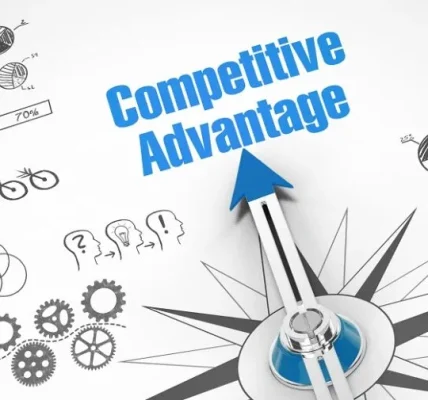Organizational effectiveness is more than a buzzword—it’s the living architecture that determines whether a company achieves its goals, survives market shifts, and thrives over time. At its core, organizational effectiveness measures how well an organization converts strategy into results while sustaining people, culture, and innovation. This article dissects the real anatomy of organizational effectiveness into clear, actionable components, explains how they interconnect, and provides a practical roadmap to diagnose and strengthen each area.
What does “organizational effectiveness” actually mean?
Organizational effectiveness is the alignment of an organization’s strategy, structure, people, processes, and culture so that it consistently delivers desired outcomes. It’s not static—it’s dynamic, measurable, and influenced by internal choices and external forces. Effective organizations do more than perform; they adapt, learn, and scale performance across time.
The foundational pillars of organizational effectiveness
Below are the essential, interdependent pillars that form the anatomy of effectiveness. Each pillar is explained in depth, with practical actions to strengthen it.
1. Strategic Clarity and Purpose
What it is: A clear and compelling purpose, plus a strategy that translates that purpose into prioritized objectives and measurable targets.
Why it matters: Without strategic clarity, teams pull in different directions. Purpose fuels engagement; strategy creates a roadmap.
How to strengthen it:
- Craft a concise purpose statement that explains why the organization exists beyond profit.
- Set 3–5 strategic priorities per planning cycle and link them to measurable KPIs.
- Use cascading objectives (company → team → individual) so daily work ties back to strategy.
- Hold regular strategy reviews to recalibrate against market realities.
2. Leadership and Decision-Making
What it is: Leaders who make timely, transparent decisions and enable others to act.
Why it matters: Leadership behavior cascades through the organization—setting norms for risk, accountability, and collaboration.
How to strengthen it:
- Train leaders in situational leadership and decision frameworks (e.g., RAPID, DACI).
- Promote psychological safety so people surface problems early.
- Ensure visible sponsorship for cross-functional initiatives to remove bottlenecks.
- Measure leadership effectiveness through 360 feedback and impact on key metrics.
3. Organizational Structure and Governance
What it is: The formal roles, reporting lines, and governance mechanisms that enable work to get done.
Why it matters: A poor structure causes duplication, confusion, and delay; a well-designed structure accelerates execution.
How to strengthen it:
- Design structure around value streams or customer flows rather than functions where appropriate.
- Clarify roles and accountabilities using RACI-style maps.
- Implement governance bodies for strategic trade-offs, with clear charters and meeting cadences.
- Review structure at regular intervals—structure should evolve with strategy.
4. Processes, Systems, and Operational Excellence
What it is: The repeatable workflows, platforms, and systems that deliver products/services efficiently and reliably.
Why it matters: Processes translate strategy into consistent outputs; systems scale and enable data-driven action.
How to strengthen it:
- Map end-to-end processes and identify value vs. waste.
- Standardize critical processes while allowing local adaptation where needed.
- Invest in integrated systems and data architecture that reduce manual handoffs.
- Use Lean, Six Sigma, or Agile practices to improve cycle time and quality.
5. Talent, Competencies, and Workforce Planning
What it is: The people strategy—how you attract, develop, deploy, and retain the skills required for present and future needs.
Why it matters: Strategy fails without the right people in the right roles with the right skills and motivation.
How to strengthen it:
- Conduct a skills gap analysis aligned to strategic priorities.
- Implement competency frameworks and targeted development programs.
- Use succession and workforce planning for critical roles.
- Foster internal mobility to retain talent and broaden experience.
6. Culture and Engagement
What it is: The shared norms, values, and behaviors that guide how people interact and make decisions.
Why it matters: Culture amplifies or undermines strategy—engaged employees execute better and innovate more.
How to strengthen it:
- Define and model core behaviors that support strategy.
- Measure engagement frequently and act on results with visible, local interventions.
- Celebrate wins and learn from failures publicly to reinforce desired norms.
- Align recognition, reward and promotion systems with cultural objectives.
7. Performance Management and Metrics
What it is: The set of KPIs and feedback loops that measure progress and enable course correction.
Why it matters: “What gets measured gets managed.” Effective metric systems encourage desired behavior and enable rapid learning.
How to strengthen it:
- Choose a balanced set of metrics: outcome, leading indicators, and health metrics.
- Limit KPIs to a manageable number (e.g., top 10) and ensure clarity on ownership.
- Implement real-time dashboards for operational visibility and monthly strategic reviews.
- Use metrics for learning, not just punishment—embed root-cause analysis into reviews.
8. Communication and Information Flow
What it is: The channels and practices that ensure information moves quickly and accurately to the right people.
Why it matters: Delays or distortions in information lead to poor decisions and missed opportunities.
How to strengthen it:
- Define communication protocols for decisions, exceptions, and routine updates.
- Use a mix of synchronous and asynchronous communication to reduce meeting overload.
- Maintain a single source of truth for critical data to avoid conflicting versions.
- Encourage upward, downward, and cross-functional feedback loops.
9. Change Capability and Innovation
What it is: The organization’s ability to adapt to change, experiment safely, and scale successful innovations.
Why it matters: In modern markets, adaptation speed is a competitive advantage.
How to strengthen it:
- Build small, cross-functional innovation sprints with clear evaluation gates.
- Create sandbox environments to test new models with limited downside.
- Invest in change management capabilities—sponsorship, stakeholder mapping, and communications.
- Reward experimentation and learning, even when experiments fail.
10. Systems, Technology, and Data
What it is: The technological backbone and data assets that power operations, insights, and customer experiences.
Why it matters: Technology multiplies human effort; poor tech choices create friction and blind spots.
How to strengthen it:
- Establish a data governance framework and taxonomy.
- Prioritize integrations that reduce manual reconciliation and speed decision-making.
- Build analytics capabilities that provide predictive insights, not just historic reports.
- Ensure cybersecurity and privacy practices are embedded as business enablers.
11. Governance, Risk, and Compliance
What it is: Frameworks for risk identification, mitigation, and regulatory compliance.
Why it matters: Governance protects the organization’s license to operate and builds stakeholder trust.
How to strengthen it:
- Maintain risk registers tied to strategy and update them through scenario planning.
- Embed compliance checkpoints in high-risk processes.
- Create a culture of ethical decision-making and whistleblower protections.
- Align internal audit priorities with strategic and operational risks.
How the pillars interact: the anatomy metaphor
Think of organizational effectiveness like a human body:
- Strategy is the brain—it sets direction.
- Leadership and culture are the nervous system—they transmit signals and interpret environment.
- Structure and processes are the skeleton and musculature—they provide shape and movement.
- People are the blood—they carry skills, motivation, and energy.
- Systems and data are the senses—they perceive and inform.
If one system fails—say, impaired data (senses)—the whole body stumbles.
A practical diagnostic checklist
Use this quick checklist to assess health across pillars. Score 0–3 per item (0 = absent, 3 = strong).
- Strategic priorities are clear and communicated.
- Leadership makes timely, accountable decisions.
- Roles and governance are unambiguous.
- Critical processes are mapped and optimized.
- Skills match strategic needs.
- Culture supports risk-taking and collaboration.
- KPIs are meaningful and owned.
- Communication is timely and accurate.
- Experimentation is structured and rewarded.
- Technology integrates key workflows.
- Risks are identified and managed.
Total score and look for clusters of weakness—imbalances are more damaging than isolated problems.
Implementation roadmap: from diagnosis to durable change
- Diagnose: Conduct the checklist and stakeholder interviews.
- Prioritize: Identify the top 2–3 pillars that would have the greatest leverage.
- Design interventions: Create clear initiatives with owners, timelines, and success metrics.
- Pilot: Start small, measure, and refine.
- Scale: Use governance to deploy across the organization with change management support.
- Embed: Update job descriptions, incentives, and governance to lock in gains.
- Repeat: Reassess quarterly—effectiveness is an ongoing discipline.
Common pitfalls and how to avoid them
- Over-reliance on tools: Tools don’t fix poor strategy or toxic culture. Use tools to enable, not replace, human judgment.
- Fragmented metrics: Too many KPIs dilute focus. Limit metrics and tie them to behavior.
- Top-down only change: Without local ownership, change stalls. Combine central vision with local autonomy.
- Ignoring capability gaps: Strategy without talent is wishful thinking. Invest in reskilling and recruitment.
- Rewarding the wrong behaviors: Ensure incentives align with long-term value, not short-term gaming.
Quick wins to boost effectiveness in 90 days
- Run a one-day strategic alignment session to confirm 3 priorities.
- Create or update a single “scoreboard” for executive visibility.
- Map one end-to-end process that causes most friction and run a rapid improvement sprint.
- Launch a pilot for peer recognition tied to strategic behaviors.
- Set up a weekly cross-functional sync for top 2 projects.
Measuring success: what good looks like
Short-term indicators (30–90 days):
- Faster decision cycles.
- Reduced process handoffs or rework.
- Improved engagement scores in targeted teams.
Medium-term indicators (3–12 months):
- Delivery of strategic milestones.
- Improved customer metrics (NPS, retention).
- Decrease in time-to-market for new initiatives.
Long-term indicators (12+ months):
- Sustainable revenue growth and margin improvement.
- Strong employer brand and low critical-role attrition.
- Resilience to market shocks.
Conclusion
Organizational effectiveness is not a one-off project; it’s a continuous, integrated practice that requires strategic clarity, disciplined execution, strong leadership, capable people, enabling systems, and a culture of learning. By diagnosing where the weakest links are, prioritizing high-impact interventions, and embedding changes into governance and talent systems, organizations can transform from reactive to resilient, and from incremental to exponential in their performance.
FAQ
Q1: How often should an organization reassess its effectiveness?
Reassess at least quarterly for operational indicators and annually for strategic alignment. In fast-moving industries, increase cadence to monthly strategic check-ins.
Q2: Can small companies apply these principles or is this for large enterprises only?
Yes—these principles scale. Small companies benefit from simpler governance, tighter strategy-to-action loops, and rapid experimentation that larger organizations often struggle to achieve.
Q3: What’s the single most common reason effectiveness initiatives fail?
Lack of sustained leadership sponsorship and follow-through. Quick pilots without structural embedding often fade away.
Q4: How do you balance standardization with the need for local flexibility?
Standardize core guardrails (data definitions, compliance), but empower local teams with decision rights and adaptation space within those guardrails.
Q5: Should effectiveness efforts focus more on culture or process?
Both—culture amplifies processes and vice versa. Start with whichever is the biggest bottleneck, but plan interventions that address both over time.
Q6: How do I choose the right KPIs for effectiveness?
Select a balanced mix: 1–2 outcome KPIs tied to strategy, 3–4 leading indicators that predict outcomes, and 2–3 health metrics monitoring capacity (e.g., engagement, cycle time).
Q7: What role does technology play versus human capability?
Technology is an enabler that amplifies human capability. Prioritize human capability and design technology to remove friction, provide insights, and scale repeatable tasks.








